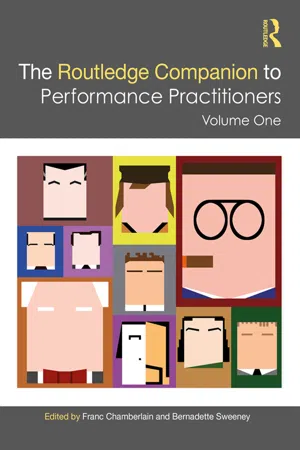Theatrical repertoire in Russia towards the end of the nineteenth century was in a quagmire of stagnation. The Imperial theatres (those subsidised by the State) dominated Moscow and St Petersburg and, along with a smattering of privately owned venues, they operated under the beady eyes of Tsar Nicholas II’s censors. Their hawkish gaze kept a tight rein on any play whose subject matter might be deemed politically or personally subversive. ‘Safe’ theatrical fare consisted of melodramas and vaudevilles, hastily translated from the French and German originals, though occasionally an innovative piece of new writing surfaced. Describing his play, The Last Will, Vladimir Nemirovich-Danchenko (1858–1943) wrote that:
This play greatly pleased the actors. It was written as was said in those days, in soft tones; it did not offend anyone and revolutionised nothing; the chief thing about it was its excellent roles: big scenes with temperament and effective exits.
(Nemirovich-Danchenko 1937: 12)
Not only does Nemirovich admit here that the more timid the play, the more likely its success, but also he reveals the importance of the actors.
Russian theatre of the nineteenth century was actor-driven: the idea of a director shaping a production was unheard of. In fact, ‘The role of stage director was a very modest one; it had neither a creative nor a pedagogic content. Actors listened to him merely out of politeness’ (ibid.: 29). But there’s no need for a director when you already know what’s required of your acting. In a repertoire where melodrama predominated, actors were cast to a formulaic type known as an emploi. This meant that each performer specialised in a particular role, such as the romantic lover, the comic flunkey or the bumbling father, according to his or her personality and stature. This emploi then became the blueprint for any role that the actor played. The audience grew familiar with both the actor and the emploi, and began to expect it at every performance, regardless of the play. The result of the audience’s expectation was the development of a ‘star system’, as ‘actors lost their independence and went into the service of the crowd’ (Stanislavsky 1984: 105). The ‘big scenes with temperament and effective exits’ referred to by Nemirovich involved the star actors being ‘called out’ by the audience in the middle of a scene to come centre stage and receive wild applause. The remaining onstage cast froze, doll-like, until the adored actor had finished bowing, at which point the action of the play could resume. It was the playwright’s job to incorporate these moments into a script, and the more famous the actor the more effective exits would be required. Here, then, was no ensemble acting: here was a theatre dominated by a ‘star system’.
The situation was exacerbated by the frighteningly short rehearsal periods, which often resulted in actors simply not knowing their lines. And yet it was hardly their fault. At a time when leisure pursuits were limited, a rapid turnover of repertoire was a prerequisite of any business-minded theatre. Consequently, rehearsal time for a new production was a rarity, not a necessity. Quantity ruled over quality, leading to a situation where most performers had greater need of a prompter than a director. To save them from embarrassment, the prompt box was situated Down-Stage-Centre and sunk into the floor. It was not uncommon for much of a play’s action to be performed ‘DSC’, so that the actors could be prompted through their entire performance.
The ‘star system’ also impacted on the design of a show. Designers were still unusual in most theatres, and the rapidity of the repertoire’s turnaround prohibited anything more ambitious than the recycling of old productions. Sets were dragged from the store, with stock canvas backdrops depicting dining rooms, gardens, or parlours, reappearing regardless of the genre or form of the play in question. As for costume design, this was determined by the leading actresses, each of whom was expected to supply her own wardrobe. Should the leading lady choose to wear crimson in the third act, then woe betide the female juvenile if she decided to wear red! An actress’s acclaim lay in direct proportion to the voluptuousness of her wardrobe; therefore, money was vital and that often meant relying on a wealthy patron. As one actress of the time declared: ‘How could you have a career without a wardrobe. What is an actress without costumes? She is a beggar; her route to the stage is cut off’ (Velizarii cited in Schuler 1996: 31). Wealth and wardrobe swung an actress’s fate: acting processes were the last consideration.
For all their influence, the professional acumen of the ‘stars’ was questionable. Before the monopoly of the Imperial theatres was abolished in 1882, actor-coaching was rare. Even when training programmes did become established, ‘many actresses and actors firmly rejected the idea that acting was a learned skill’ (ibid.: 39). So how did young actors acquire their craft? By imitating the great performers, of course! Even Stanislavsky confessed that his usual practice as an amateur was to copy blindly his favourite artist of the Imperial Maly Theatre. He memorised every bit of business in the great actor’s interpretation of a role, learning the full range of his gestures and intonations, and leaving Stanislavsky’s own directors with nothing to do. After all, he had already ‘acquired’ his performance, albeit second-hand. But how else could young actors learn when there was no written ‘manual’ that might help them? Thus, a type of performance evolved in which shouting, exaggerated gestures and simple characterisations were all ‘larded with animal temperament’ – and that was considered ‘full-toned acting’ (Stanislavsky 1984: 40). The artistic climate into which Stanislavsky emerged as a theatre practitioner was fairly bleak: a chaos devoid of coherent stage pictures, design concepts, directorial decisions, trained professionals and ensemble companies. Under these conditions, and without an acting ‘A–Z’, Stanislavsky began his process of ‘revolution’.
